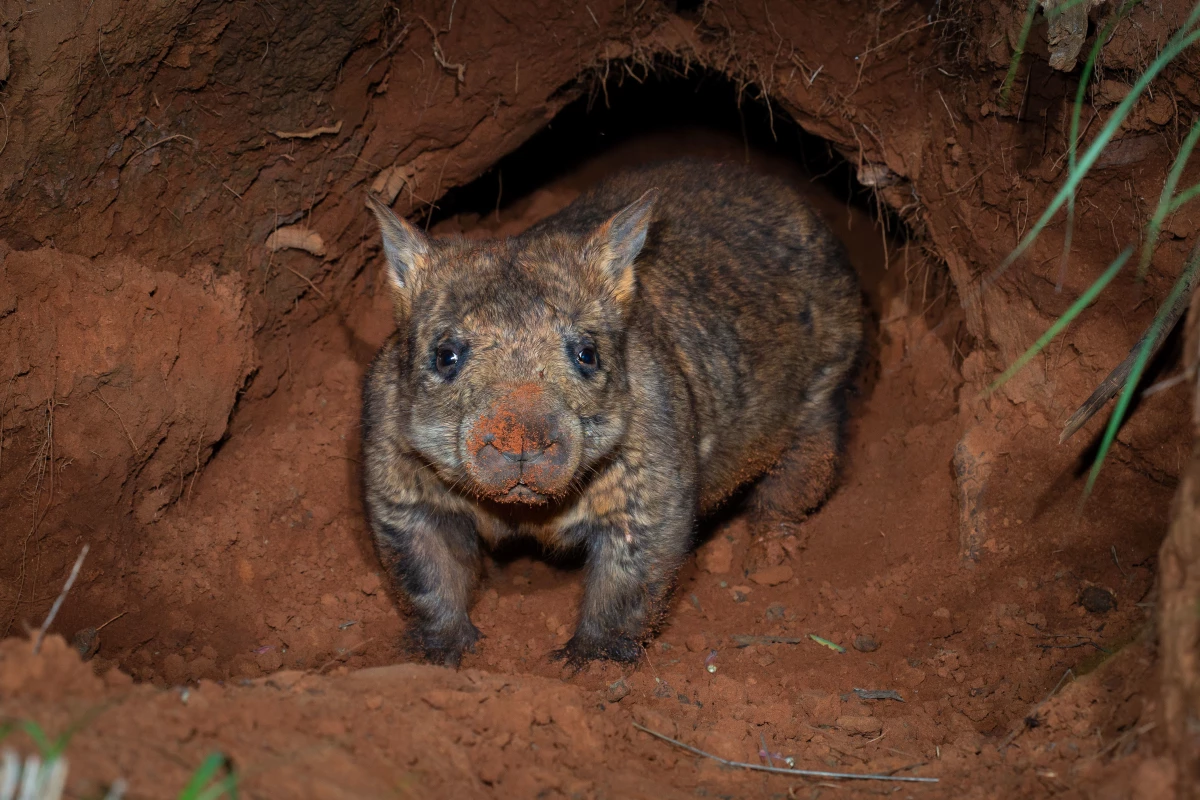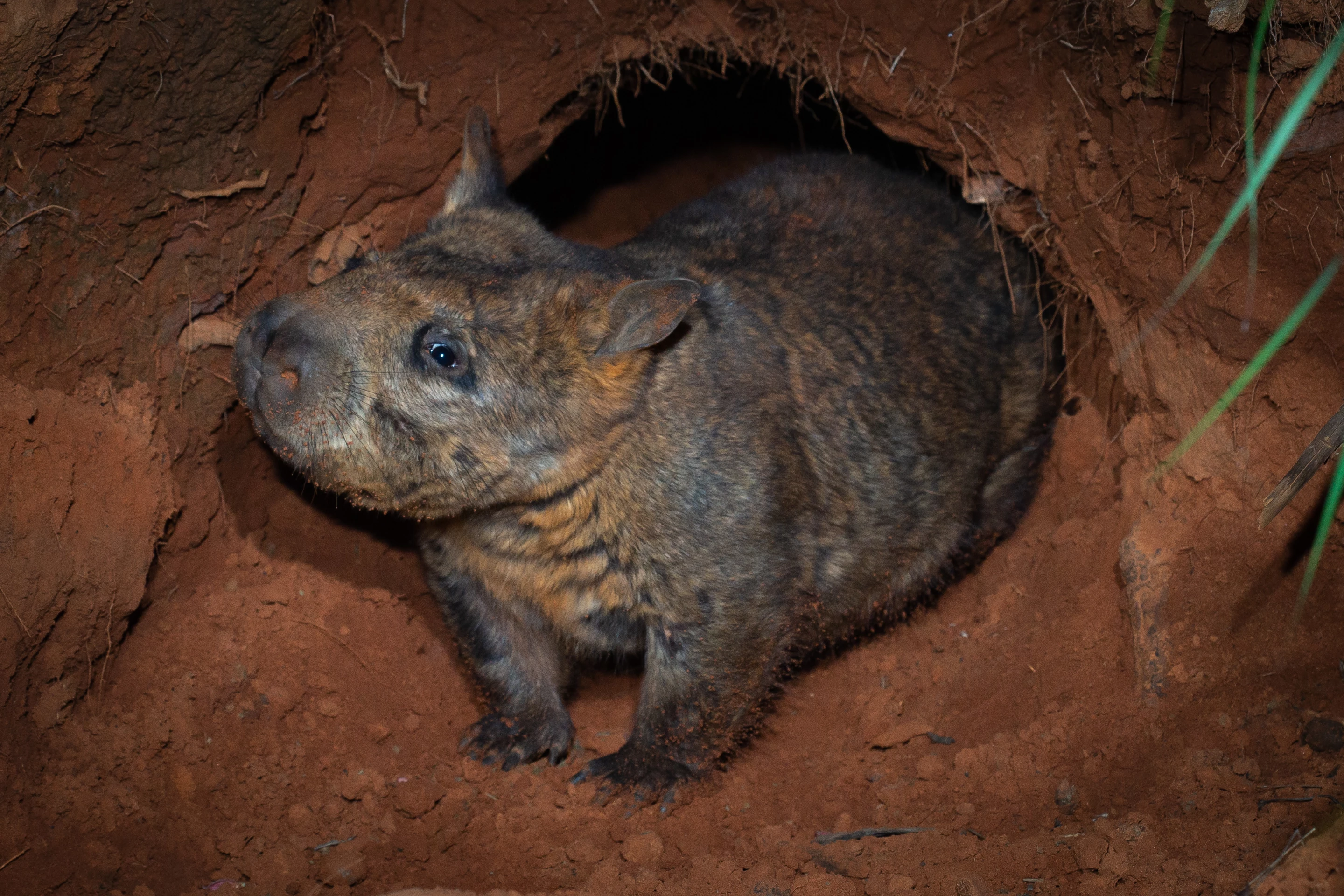Seeing a wombat in the wild in Australia is not a rare experience, but when ecologists managed to capture this particular one emerging from a den and casually wandering past a motion-sensor camera in the middle of the night, there was serious cause for celebration.
The reason was not because, as an ecologist, you spend hundreds of hours looking through footage for signs of wildlife, but because this particular wombat is one of only 400 left in the wild – and, even more importantly, it was a healthy young joey, estimated to have only emerged from its mother's pouch last year.
So all signs are good that a recently established breeding program in a protected area is working.
This juvenile Northern Hairy-nosed wombat was spied waddling around the Richard Underwood Nature Reserve (RUNR) in the state of Queensland, and the species is one of Australia's rarest mammals – and most endangered. Fragmented populations have meant limited breeding opportunities, so to see a healthy young toddler out for a stroll has given ecologists new hope that years of investment in protecting a group of the animals introduced to RUNR may actually be paying off.
“It’s very gratifying to know that one of the world’s most critically endangered animals is doing well and breeding within the safety of the fenced area,” said Andy Howe, Australian Wildlife Conservancy (AWC) Senior Field Ecologist. “Although this isn’t the first joey born at the refuge, it is the first juvenile spotted for a few years. Knowing the work we at AWC are doing is actively contributing to the recovery of this species, really warms the heart.”
The AWC will soon develop a genetic management plan in order to ensure the reintroduced populations have both the resources and breeding diversity to rebuild their numbers.

“The wombat is quite robust indicating that it is feeding well and getting enough nutrition,” added Howe. “Overall, this bit of footage tells us a lot about the state of the RUNR population, showing us that the wombats have the right conditions and feel comfortable enough to breed.”

The Northern Hairy-nosed wombat is rarer than the giant panda and the Sumatran tiger, and due to land clearing was almost entirely wiped out in the early 1980s. It's the largest burrowing mammal in the world, can live to the ripe old age of 30 and will spend most of its time in underground dens.
Despite Australia having some of the most unique mammals on the planet, the country has a horrific record in keeping them on Earth. Some 35% of global mammal extinctions since the 1500s have been in Australia, making up 30 out of 84 species worldwide.
Source: AWC







